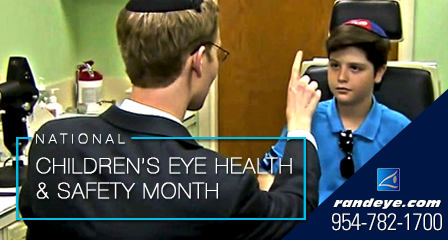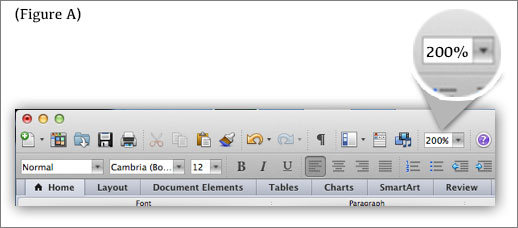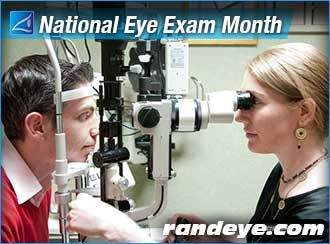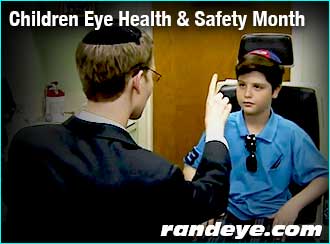April is Women’s Eye Health Month and Sports Eye Safety Awareness Month

The month of April reminds us of two very important topics: Women’s Eye Health and Sports Eye Safety month. Rand Eye Institute is very aware of the importance of these two important topics as we see the daily consequences, they cause our patients. In Women’s Eyes Health prevention is key. This goes back to the importance of annual eye exams. On the other hand, for Sports Safety, protection is the name of the game. Keywords for April are Prevention and Protection.
The Prevent Blindness organization states that women have higher rates of eye diseases such as cataracts, glaucoma, and age-related macular degeneration than men. Women also tend to have a higher rate of dry eyes and often deal with vision changes due to hormonal changes, pregnancy, and menopause. It is important to note that women are usually the caregivers for the entire family, hence, the further importance of their eyesight. The National Eye Institute stated that women deal with greater instances of eye disorders because they tend to live longer lives than men. Therefore, women are more likely to undergo cancer treatments which affect their vision. Medications, Hormonal treatments, hormonal imbalances can produce vision changes. Annual Eye exams will detect most conditions which, if caught early, can be treated or controlled.
Sports Eye Safety is another important topic to reflect on. Accidents will happen when playing sports, but if you are protected, you will not get injured. Eye Protection should fit comfortably and protect eyes without compromising on your athletic performance. This is true especially when it comes to the health of your eyes.
Here are some tips when buying sports protection:
- Consult an eye care professional to get the best eye protection for your sports, hobbies, and lifestyle
- Ask your eye doctor to fit you with prescription eye protection if you need glasses
- Please remember that protection needs to be cushioned and well fitted to your face so that it does not cut the skin in case of contact with an object.
- Make sure the purchased eye protection fits well. Consult with an eye professional.
We are back to our two keywords. Prevention by attending your annual eye exams is very important for everybody but especially for women. And protection to prevent any injury. You can have fun and be fit without the fear of compromising your vision. Have a great and healthy month of April! Call 954-782-1700 for your annual eye exam.
Workplace Eye Wellness – Tips to Consider

Workplace Eye Wellness Month
Tips to Consider
According to the CDC, more than 2,000 US workers sustain eye injuries every day. We must educate people on how to address these preventable injuries. The first step is to have the workplace, whether it is a factory, an office, or a park, engage in the education and supervision of the safety of their staff. The Occupational Safety and Health Administration (OSHA) requires employers to ensure the safety of all their employees. Eye and face protection must be provided whenever a potential exposure to chemical, radiological, or mechanical irritants are present.
Safety eyewear includes:
- Non-prescription / prescription safety glasses
- Face Shields
- Welding helmets
- Full face respirators
Eye wellness must also be taken into consideration in the office environment. Too much screen time and not enough breaks can lead to headaches, neck pains, back strain, and dry eyes. When we stare at a screen for an extended period, we are not blinking as often and thus the eyes are not getting lubricated. Lack of lubrication leads to dry eye symptoms a condition that can be quite bothersome and painful.
Here are some tips on ways to protect your eyes from dry eye syndrome:
- Remember the 20-20-20 rule. Every 20 minutes look at an object 20 feet away for 20 seconds.
- Do not forget to blink
- Use artificial tears
- Drink water
- Schedule regular eye appointments with your eye physician.
- If you already have dry eyes, Rand Eye Institute offers special dry eye appointments on Tuesdays with Dr. Allison Rand.
Most eye conditions can be treated if caught early. An eye physician can prescribe and provide the tools to treat dry eye syndrome. Please do not procrastinate on scheduling your next eye appointment. Your vision is a precious gift, take care of it!
National Children’s Eye Health & Safety Month
It’s August and while summer vacation is winding down, students and parents are preparing for another school year. This year, don’t forget to include on your back-to-school checklist an annual eye exam.
It is important to have your child’s eyes tested, because it can lead to greater success in the classroom since much of a child’s learning occurs visually.
Have you noticed any change in your child’s vision? Here are some signs and behaviors you can watch for that may indicate a child is struggling with his or her vision.

Is Your Child Doing Any of the Following?
- Rubs eyes frequently;
- Closes or covers one eye;
- Tilts head or thrusts head forward;
- Has trouble reading or doing other close-up work, or holds objects close to eyes to see;
- Blinks more than usual or seems cranky when doing close-up work; or
- Squints eyes or frowns.
Does Your Child Say Any of the Following?
- “I can’t see very well”
- After doing close-up work, your child says, “I feel dizzy,” or “I have a headache,”
- “Everything looks blurry,” or “I see double.”
It is recommended that your child have an annual eye exam to screen for any abnormal changes in vision or to confirm that all is well. Let’s start the new school year off with an “A” in vision!
Relieving Eye Stress in the Digital Age
When people think of eye injuries at work, many conjure up the jobs that seem most risky to the eyes, like welder, construction worker, or chemical engineer (handling chlorine, acid and other chemicals). These are the types of jobs with the highest risk of having a foreign object enter the eye.
While those jobs do involve risk to the eyes, this month during Workplace Eye Wellness Month, we take a look at a more recent threat to our vision thanks to technology and convenience.
According to Pew Research Center, 77% of Americans own a smartphone, up from 35% in 2001. For many, this is the primary way they access digital information, via texting, email, engaging in social media platforms and surfing the web. Between smart phones, laptops and digital pads, nearly everyone in the U.S. is online some time during the day or night, and your eyes know it. Not so “smart” says The American Academy of Ophthalmology.
There are some simple ways to get relief from Digital Eye Strain, also known as Computer Vision Syndrome.
- Observe the 20-20-20 rule: Every 20 minutes, take a 20-second break and look at something 20-feet away and rest your eyes for 15 minutes after two hours of continuous computer use.
- Make sure that you’re looking down toward your computer screen, optimally about 4-5 inches below eye level as measured from the center of the screen and 20-28 inches from the eyes. Use an anti-glare screen when possible.
- Lighting is important. Position the computer screen away from the glare of light sources, particularly overhead lighting and windows. Use blinds or drapes on windows and switch to lower wattage bulbs in your desk lamps.
- If you’re using a word processing program, you might be able to raise the % size of your font (as shown below in the upper right of figure A), without affecting your document format.

This visual adjustment is an easy way to work with larger font without reformatting.
- This is a simple one: make an effort to blink frequently, keep eye drops by your side and stay hydrated by drinking plenty of water.
If you have uncorrected vision problems, it can increase the severity of Digital Eye Strain or Computer Vision Syndrome. Make an appointment with your eye care professional to see if there’s anything that can be done to improve your vision and comfort while using digital devices.
Next time, we’ll explore Personal Protective Equipment for your eyes, or PPE.
Parent and Child Eye Exams
At Rand Eye Institute, we’ve been sharing helpful tips on getting your kids ready for back to school by reminding you that they should have their vision checked before the school bell rings.

But here’s a good suggestion: Why not make a dual eye exam appointment? Consider having your vision and your child’s vision checked all in one visit, after all, August is “National Eye Exam Month”.
By scheduling a comprehensive eye exam at Rand Eye Institute, you could be heading off future vision problems now, especially if you have diabetes or have a family history of vision problems.
So with vision on our mind this month, keep good vision in the family. Call or “Click” to schedule a dual eye exam* for you and your son or daughter. From our family at Rand Eye Institute, to yours, have a safe Fall season and a successful jump-start to a successful school year.
Know your Rand Eye-Q: Did you know that ophthalmology care is covered under your medical insurance and not your vision plan, this is a common misconception. Please feel free to call us to see if our specialists are participating with your medical insurance.
*A dual eye exam appointment is considered two separate appointments. Ask our appointment specialist for more information when scheduling your appointments.
National Eye Exam Month
At Rand Eye Institute, we know how important it is for you to keep up with your Eye-Q, that is, knowledge about your vision and the understanding of how to keep yours at its brightest and best.
August is “National Eye Exam Month” and healthy vision starts with an eye exam. The American Academy of Ophthalmology recommends that you have a baseline eye exam at age 40, the time when the early signs of disease or changes in your vision may occur. A baseline screening can help identify signs of eye disease at an early stage, when treatment can have the greatest impact on preserving your vision.
If you’re 65 or older, it’s recommended that you have your eyes checked every year or two for signs of age-related diseases, like glaucoma, age-related macular degeneration and cataracts.

During a dilated eye exam you’ll be checked for the following:
- Medical/family history
- Pupil reaction
- Side/peripheral vision
- Eye movement, muscle balance and coordination
- Focusing ability along with potential refractive errors (myopia, hyperopia, astigmatism, presbyopia) will be evaluated
- Check prescription of eye glasses against new refraction testing
- Eye pressure
- Front part of your eye
- Retina and optic nerve
One of our experienced ophthalmologists will then be checking on the general health of your eye, tracking any disorder that might impair your vision (cataracts, glaucoma, macular degeneration, diabetic retinopathy).
The doctor may suggest additional testing to further evaluate your vision using specialized testing equipment. These tests can be crucial in diagnosing a disease in its early stages and give the doctor an opportunity to suggest a treatment or cure. We are strong advocates of prevention through early detection.
To schedule a comprehensive eye exam, call us at 954-782-1700 and select the “appointment specialist” prompt, or to fill out our convenient appointment request form Click Here. We look forward to seeing you at the Rand Eye Institute, offering Excellence in Ophthalmology.
Happy Thanksgiving – 2015
The Rand Eye Institute wants to wish you all a blessed Thanksgiving Day filled with love, joy and happiness.
We would like to take this opportunity to Thank You! for choosing the Rand Eye Institute, for all your eye care needs.
Have a Safe and HAPPY THANKSGIVING!
Nutrition Tips for Aging Eyes
Our eyes age just as the rest of our body does. It is crucial to take care of our eyes with the same persistence that we do with our mind and body.
And it might be as simple as eating the right foods. 
1. Lutein and Zeaxanthin
These are two types of potent antioxidants that can be beneficial for eye diseases like macular degeneration.
Ward of eye problems by indulging in foods that are rich in lutein and zeaxanthin, such as:
- Kale
- Spinach
- Squash
- Corn
- Grapes
- Kiwi
2. Whole Grains and Cereals
Sugars and refined white flours that are commonly found in breads and cereal may increase your risk of age-related eye diseases. Instead opt for 100 percent whole-grain breads and cereals that have lots of fiber, which actually slows down the digestion and absorption of sugars and starches. Fiber also keeps you feeling full, which makes it easier to limit the amount of calories you consume.
3. Avoid Sodium
High sodium intake may add to your risk of cataract formation. Use less salt, and look for sodium content on the labels of canned and packaged foods. Stay below 2,000 mg of sodium each day. Choose fresh over frozen foods whenever possible.
4. Stay Hydrated
This may seem obvious, but it is also extremely crucial in keeping your eyes healthy and working to their best ability. Proper hydration also may reduce irritation from dry eyes. Round out a healthy diet with low-fat dairy products such as skim or 1 percent milk for calcium, and healthy beverages such as 100% vegetable juices, fruit juices, non-caffeinated herbal teas and water. Proper hydration also may reduce irritation from dry eyes.
5. Choose Healthy Fats
The omega-3 essential fatty acids found in fish, flaxseed oil, walnuts and canola oil help prevent dry eyes and even cataracts. Eat fish or seafood twice weekly, or take flax oil everyday.
September is Healthy Aging Month
As like any other part of your body, with time your eyes do get older. It is important to take care of your eyes to keep them young and fresh.
Here are a few simple ways to do just that:
Visit your eye care practitioner – comprehensive eye exams are recommended on a regular basis for adults and those who frequently use computers. For those 65 and older, as well as those with family history of eye disease, it is advised that you visit your eye care practitioner more frequently.
Follow the 20-20-20 rule – if you frequently use computers, be sure to take a 20 second break after every 20 minutes of use. Stare at something approximately 20 feet away – this will allow your eyes to relax.
Stay up to date on the normal aging process for your eyes – continuously monitor your health and be aware of the normal changes to your eyes that occur with age.
Protect your eyes from the sun! Spending too long in the sun without protection can damage your eyes by contributing to cataracts, macular degeneration and cancer.
Child Eye Health and Safety Month
It is estimated that 80% of education, nowadays, is taught visually. For children with sight problems, this could be a major issue. The inability to see clearly directly affects academic performance as well as a student’s self esteem.
Common signs of vision troubles in children include: frequently rubbing eyes, squinting, tilting or turning head to look at objects, wandering eyes, or squinting eyes.
If your child displays any of these symptoms, schedule an appointment to have their eyes checked. Many of these conditions, if diagnosed early, can be treated and vision can be restored. If the condition is not diagnosed until later in life, treatment will not be as effective.
Talk to your child’s teacher, as they are usually the first to detect these symptoms in the classroom.
The recommended pediatric eye Exam schedule for children are:
- First 12 months – Infants, particularly premature babies, should have an eye exam in the first 12 months.
- Age 2 or 3 years – Preschool is a critical time for learning.
Preschoolers should have an eye exam when they are old enough to understand and respond to the exam.
- Age 5 – Kindergarten is also a critical time for learning.
Kindergartners should have an eye exam before entering school.
- Children without identified vision problems should then have a comprehensive eye exam every two years.
- Children who wear glasses or who have other eye conditions should see the eye doctor at least annually, or more often, as recommended by the doctor.
If you or your child notice a change in their vision, schedule an appointment with your eye doctor as soon as possible.
It is recommended that your child has annual eye exams, to screen for any abnormal changes in vision.



